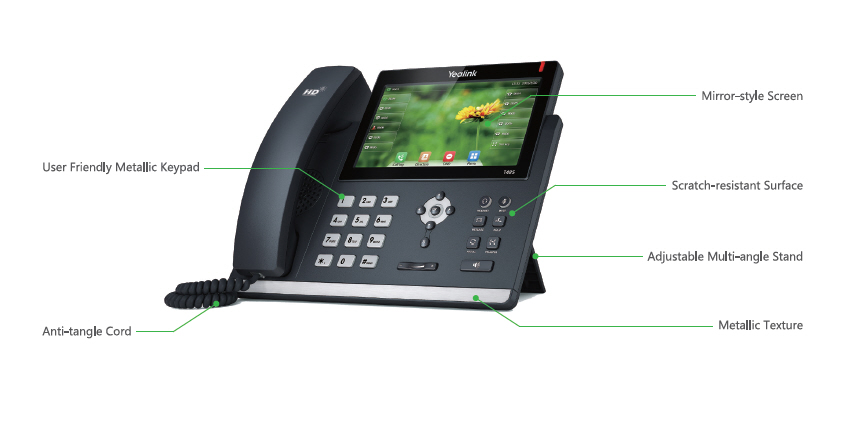Introduction
In today's rapidly evolving digital landscape, effective communication is the backbone of any successful organization, especially within the nonprofit sector. As these organizations strive to maximize their impact while minimizing costs, innovative communication solutions like VoIP phone service have emerged as game-changers. This article delves into how VoIP innovations can enhance teamwork and streamline operations within nonprofits, ultimately leading to improved outcomes for the communities they serve.

VoIP Innovations: Improving Team Collaboration in the Nonprofit Sector
VoIP, or Voice over Internet Protocol, has revolutionized how nonprofits communicate both internally among their teams and externally with donors and beneficiaries. By leveraging internet technology, VoIP offers a cost-effective alternative to traditional phone systems, providing features that enhance collaboration and effectiveness.
Understanding VoIP Technology
What is VoIP?
VoIP stands for Voice over Internet Protocol, which allows voice communication to be transmitted over the internet rather than traditional telephone lines. This technology converts analog audio signals into digital data packets that can be sent across the network.
How Does VoIP Work?
The workings of VoIP can be boiled down to three key components:
Analog-to-Digital Conversion: When a user speaks into a microphone, their voice is converted from an analog signal into digital data. Data Transmission: This digital data travels over a high-speed internet connection to reach its destination. Reconversion: At the receiving end, the digital data is converted back into an analog signal so that it can be heard by the recipient.Key Features of VoIP Phone Service
Cost Efficiency
VoIP services are generally more affordable than traditional telephony systems because they utilize existing internet infrastructure. This can significantly reduce operational costs for nonprofits operating on tight budgets.
Scalability
As nonprofits grow, so do their communication needs. VoIP solutions are inherently scalable; adding new users or features often requires little more than adjusting software settings.
Advanced Collaboration Tools
Many VoIP services come equipped with features such as video conferencing, instant messaging, and file sharing—all vital tools for enhancing team collaboration.
Benefits of VoIP in Nonprofits
Enhanced Communication
With VoIP innovations making it easier to connect with team members regardless of location, nonprofits can foster better intra-team communication and collaboration.
Increased Productivity
By streamlining communication channels and reducing downtime associated with traditional phone systems, VoIP enables staff to focus on their core mission rather than getting bogged down by technical issues.

Improved Accessibility
VoIP services can facilitate remote work by allowing employees to access their office phone numbers from anywhere with an internet connection—a crucial feature in today's hybrid work environment.
Implementing VoIP Solutions in Nonprofits
Assessing Communication Needs
Before integrating a new system like VoIP, it's essential for nonprofits to assess their unique communication needs:
- How many users will need access? What specific features would best suit your organization's operations? Are there any existing systems that need integration?
Choosing the Right Provider
Not all VoIP providers offer the same level of service or features. When selecting a vendor:
- Look for testimonials or case studies from other nonprofit organizations. Check for scalability options. Ensure they provide robust customer support.
Training Staff on New Technologies
Transitioning to a new system requires training staff members adequately to ensure everyone is comfortable using it:
Develop training modules focusing on key functionalities. Offer ongoing support during the transition period. Encourage feedback for continuous improvement.Case Studies: Successful Implementation of VoIP in Nonprofits
Case Study 1: Red Cross
The Red Cross implemented a cloud-based VoIP solution that allowed them to manage communications during disasters more effectively. The flexibility of being able to reroute calls and messages ensured that vital information was disseminated quickly.
Case Study 2: Habitat for Humanity
Habitat for Humanity adopted a multi-line VoIP system that enabled local chapters around the world to communicate seamlessly with headquarters and each other during construction projects.
Exploring Advanced Features of VoIP Services
Video Conferencing Capabilities
Video conferencing has become increasingly important as remote work continues to rise:
- Enables face-to-face interaction without travel costs. Facilitates team meetings across different geographical locations.
Call Routing and Management Tools
Effective call management tools allow organizations to prioritize calls based on urgency or importance:
- Benefits include reduced wait times and improved customer satisfaction.
Integration with Other Software Solutions
Many modern VoIP services integrate well with other business applications—such as CRM systems—which can further enhance efficiency:
- Streamlined information sharing enhances collaboration between departments.
Challenges Faced by Nonprofits When Adopting VoIP Solutions
Budget Constraints
While cost-effective compared to traditional systems, initial setup costs may still pose challenges for some nonprofits:
- Consider low-cost options or grants specifically aimed at technology upgrades.
Technical Issues During Transition
Transitioning from one system to another often comes with technical difficulties:
- Ensure IT support is available throughout the implementation phase.
FAQ Section
1. What are some advantages of using a VoIP phone service in nonprofits?
Using a VoIP phone service provides cost savings, enhanced collaboration tools, scalability options, and improved accessibility—all essential features for nonprofit organizations looking to maximize impact while managing limited resources.
2. Is it difficult to switch from a traditional phone system to a VoIP system?
Switching can pose challenges; however, if planning is thorough and staff training is Business Phone Service provided effectively, most organizations find the transition manageable and ultimately beneficial.
3. Can remote workers effectively use VoIP services?
Absolutely! One of the significant advantages of using a VoIP system is its ability to facilitate remote work seamlessly—employees can access calls and messages from anywhere with an internet connection.
4. Are there specific providers recommended for nonprofits?
Several providers cater specifically to nonprofit needs; researching testimonials or seeking recommendations via nonprofit forums may help identify suitable vendors tailored for your organization's requirements.
5. How secure are communications made through VOiP?
Most reputable providers implement robust security measures such as encryption protocols; however, it’s always advisable for organizations handling sensitive information to verify security practices before adopting any service.
6. Can I use my existing internet connection for Voice over IP?
Yes! Most likely you already have sufficient bandwidth available through your existing internet plan; however evaluating your network's capacity before implementation ensures optimal performance when transitioning communications.
Conclusion
In conclusion, embracing VoIP innovations represents not just an upgrade in technology but also an opportunity for nonprofit organizations to enhance team collaboration significantly while optimizing costs—key factors that contribute directly towards achieving their missions effectively. As this sector continues navigating through challenges brought forth by ever-changing circumstances—from funding constraints arising due economic fluctuations—to growing demands placed upon them amidst crises—adopting innovative solutions becomes imperative if they wish fulfill their commitments successfully while maintaining sustainability long-term!

By prioritizing effective communication strategies through advancements like those offered via reliable voip telephone service providers today coupled alongside necessary training programs tailored specifically catering user needs - non-profits stand poised not only remain relevant but thrive within communities served empowering positive change far beyond mere survival alone!
This article serves as an extensive guide detailing how VoIP Innovations contribute positively towards improving overall collaboration efforts within non-profit sectors paving roads toward impactful sustainable futures ahead!